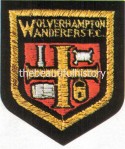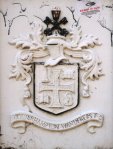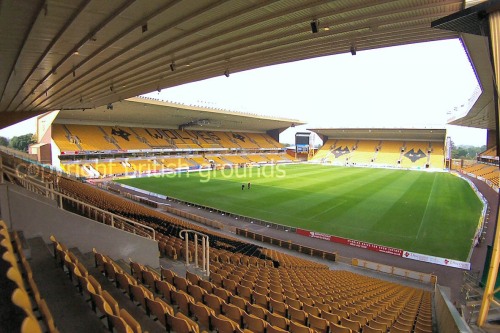Wolves first began life as a schoolboy team in 1877 when the headmaster of St. Luke’s school in Blakenhall, Harry Barcroft, presented a football to a group of pupils who had enjoyed an exceptional year’s schoolwork. The presentation of the football was instigated by the co-founders of the team, John Baynton and Jack Brodie.
Two years later, after merging with the local cricket and football club known as The Blakenhall Wanderers, they became known as Wolverhampton Wanderers. They first played at the Old Windmill Field in the Goldthorn Hill area and moved to nearby John Harper’s Field two years later. The club transferred to yet another field located just off Dudley Road opposite the Fighting Cocks in the summer of 1881. It could hardly have been called a proper ground since the only shelter for spectators was a shed. Whilst residing here Wolverhampton Wanderers staged some of their more prestigious encounters at the Molineux Grounds, a pleasure park similar to London’s Crystal Palace and the Aston Lower Grounds in nearby Birmingham.
In 1888 the club were invited to join the Football League in its inaugural season. Having by now become one of the leading clubs in the land, it was obvious that a more suitable ground had to be found. The Wanderers’ attention was drawn to Molineux and it has been their home ever since 1889.
 When Blakenhall Wanderers and St.Lukes amalgamated they took on the red and white school colours of the latter. Reportedly they also turned out in blue and black and in a pink and white combination.
When Blakenhall Wanderers and St.Lukes amalgamated they took on the red and white school colours of the latter. Reportedly they also turned out in blue and black and in a pink and white combination.
Wolves played for the first time in the famous gold and black in the 1891-92 season. Gold is a prominent colour in the borough’s arms and black seems an apt choice for a club from a principal town in the ‘Black Country’. The gold-and-black shirts were diagonally halved and even striped for a time and in the Wolves only season in the old 3rd Division North in 1923-24 the shirts were gold with a black “v” front and back.
 The club then switched to the all-gold-and-black before reverting back to gold-and-black stripes when Major Buckley took over in 1927-28, although this was short-lived and they were back playing in their now traditional strip before the end of the 20′s. One other point worth of mention is that the old-gold became much lighter during the 60′s and has only returned once again to it’s familiar darker old-gold colour at the turn of the Millennium.
The club then switched to the all-gold-and-black before reverting back to gold-and-black stripes when Major Buckley took over in 1927-28, although this was short-lived and they were back playing in their now traditional strip before the end of the 20′s. One other point worth of mention is that the old-gold became much lighter during the 60′s and has only returned once again to it’s familiar darker old-gold colour at the turn of the Millennium. The wolf design the club is renowned for, also giving rise to the nickname, wasn’t the Wanderers’ first insignia. Wolverhampton was incorporated as a borough in 1848 and was granted arms in 1898 to celebrate fifty years as a borough. The Wolves identified theirselves with these arms by adopting its shield. The golden cross is intended to commemorate King Edgar’s sister Wulfrun, who founded Wolverhampton in 985.
The wolf design the club is renowned for, also giving rise to the nickname, wasn’t the Wanderers’ first insignia. Wolverhampton was incorporated as a borough in 1848 and was granted arms in 1898 to celebrate fifty years as a borough. The Wolves identified theirselves with these arms by adopting its shield. The golden cross is intended to commemorate King Edgar’s sister Wulfrun, who founded Wolverhampton in 985. Around the cross are arranged a woolpack recalling the old woollen trade, formerly the source of the town’s prosperity, and a representation of the town’s Saxon pillar stone, now in the churchyard of St Peter’s church. The open book signifies learning for the old grammar school and the padlock is a reminder of the fact that in the eighteenth century the manufacture of locks was an important local activity, the Wolverhampton locksmiths being accredited the most ingenious in England.
Around the cross are arranged a woolpack recalling the old woollen trade, formerly the source of the town’s prosperity, and a representation of the town’s Saxon pillar stone, now in the churchyard of St Peter’s church. The open book signifies learning for the old grammar school and the padlock is a reminder of the fact that in the eighteenth century the manufacture of locks was an important local activity, the Wolverhampton locksmiths being accredited the most ingenious in England.
There’s was an old gate at Molineux behind what was once the biggest terrace in England with a reproduction of the full arms, including the crest with its black beacon alluding to the Black Country, together with the crossed keys of St Peter, patron saint of the town.
The wolf image appeared on shirts in the early Seventies, apparently jumping over the club’s initials. Official club blazers from the early Sixties and team pictures from the mid-Seventies also show three wolves on the run. A wolf’s head soon became a single-minded theme from the beginning of the Eighties, from time to time slightly modified with either the addition of banners, the club’s full name and foundation year or the initials FC.





international-class Pakistani & Indian Escorts business enterprise Doha Escorts in Qatar! is one of the first-rate assets of lovely, scorching, and warm lady escorts. We provide you well skilled and professional Escorts in Doha and they're versatile in diverse languages. Pakistani Escorts enterprise offers you the satisfactory collection suitable Escorts in Doha , at the same time we intend to offer you the full pride that you usually favored and towards to provide our clients the exceptional series from rest of the industry
ReplyDeleteAll our sharp, attractive and in vogue escorts, call girls, female mates, Desi Girls are prepared in the craft of conveying joy and endeavor to fulfill the request and want of their regarded clients; truth of what we have composed above about our Lahore Escorts is available in the criticism provided by our nearby and universal clients. We pride our self on the capacity that we convey the best Escorts in Lahore girls and female form models in an exceptionally special and attentive way.
ReplyDelete